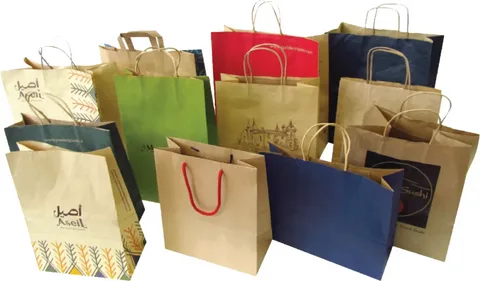Introduction
In a world increasingly concerned about environmental issues, paper bags have emerged as eco-friendly heroes, shining a light on the importance of sustainable choices. No longer just utilitarian items, paper bags have taken on new roles in our lives, from carrying groceries to becoming stylish paper gift bags. In this article, we will delve into the multifaceted importance of paper bags, exploring their evolution, their contributions to environmental sustainability, and their role as party bags for kids. We will also introduce you to “Mr Bags,” an iconic figure in the world of paper bags and sustainability.
The Evolution of Paper Bags
Paper bags have been a part of human civilization for centuries, but their journey from simple utilitarian items to essential, eco-conscious accessories is a remarkable one.
It all started in ancient China, where paper was invented during the Han Dynasty around 105 AD. The earliest known paper bags were created in China, crafted from mulberry bark. These bags were not just for carrying goods; they symbolized the profound cultural importance of paper in Chinese society.
Fast forward to the 18th century when paper bags made their debut in Europe. However, it wasn’t until the 20th century that their mass production began, thanks to the pioneering work of Francis Wolle and Margaret E. Knight. They revolutionized the paper bag industry with their machine inventions and innovations in flat-bottomed bags.
The Environmental Imperative
One of the most critical aspects of the importance of paper bags in the modern era is their environmental impact. As society becomes increasingly conscious of its ecological footprint, the use of paper bags has become an essential component of sustainable living.
Unlike their plastic counterparts, paper bags are biodegradable and renewable. They decompose naturally, minimizing the long-lasting pollution caused by single-use plastics. Moreover, paper bags are often manufactured from recycled paper, contributing to the reduction of waste in landfills and forests’ conservation.
The shift towards paper bags has been accelerated by growing concerns over plastic pollution and the harmful effects of non-biodegradable materials on the environment. Organizations, governments, and individuals are realizing the necessity of adopting more eco-friendly alternatives. This has led to a surge in demand for paper bags, particularly in retail and packaging industries.
The advent of the modern paper bag paved the way for various applications beyond their initial purpose as containers. Paper gift bags, in particular, became popular for their versatility and aesthetic appeal. This transformation marked the beginning of a new era for paper bags, where they would evolve from simple carriers to style statements.
Paper Bags as Sustainable Alternatives
Mr Bags, also known as Tao Liang, is a prominent figure who has championed the cause of paper bags and sustainability. With millions of followers on social media, Mr Bags has used his influence to promote the use of paper bags as a fashionable and eco-conscious choice. He has collaborated with luxury brands, creating limited edition paper gift bags that have become highly sought-after collectibles.
Mr Bags’ approach highlights the versatility and sustainability of paper bags. By partnering with top-tier fashion houses, he has shown that paper bags can be both eco-friendly and stylish. This association between luxury brands and paper bags underscores their shift from mere carriers of goods to fashion statements. It’s a testament to how paper bags have evolved beyond their utilitarian origins.
Party Bags for Kids
Paper bags have found yet another meaningful role as party bags for kids. These bags serve a dual purpose, enhancing the excitement of children’s parties while promoting sustainability.
Party bags for kids are traditionally filled with goodies and small toys to be given away as mementos to young partygoers. The choice of paper bags as the preferred medium for these party favors contributes to instilling eco-consciousness from an early age. Children learn about the importance of making sustainable choices, even during festivities.
Paper bags provide an excellent canvas for creativity, making them ideal for customizing with themes and decorations that match the party’s ambiance. Kids enjoy receiving these personalized party bags, turning them into cherished keepsakes.
Additionally, the eco-friendliness of paper bags used as party bags sets a positive example for children, teaching them about responsible consumerism. It’s a subtle yet effective way to promote a culture of sustainability among the youngest generation.
Conclusion
The multifaceted importance of paper bags has never been more pronounced. From their historical evolution to their critical role in environmental sustainability, paper bags have come a long way. The impact of figures like “Mr Bags” in promoting sustainability through fashion further underscores their significance.
In a world striving to reduce plastic waste and increase awareness of ecological issues, the shift towards paper bags has been pivotal. Their biodegradability, renewability, and recyclability make them a sustainable alternative to their plastic counterparts. Additionally, their role as party bags for kids fosters the next generation’s environmental consciousness.
Paper bags are no longer just carriers; they are statements of our commitment to a greener future. Their importance is not just functional; it’s symbolic of our evolving perspective on the environment and sustainability. As we continue to embrace paper bags in various aspects of our lives, we are not just adopting a practical solution; we are contributing to a significant transformation in our collective behavior, one bag at a time.

